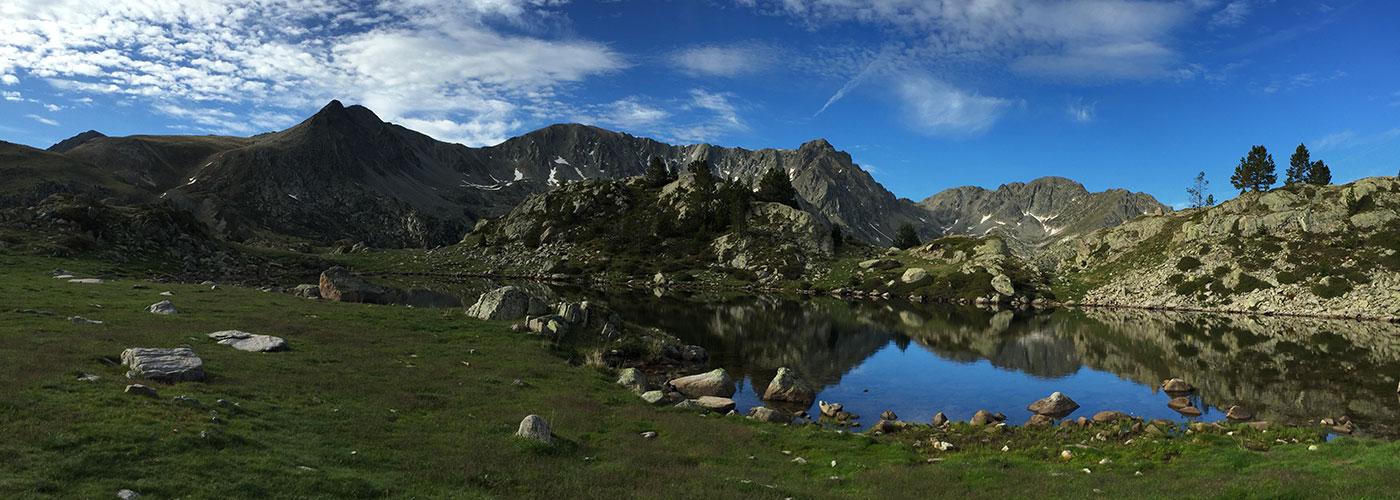
la vall del madriu-perafita-claror: World Heritage
The Madriu-Perafita-Claror Valley was declared World Heritage by UNESCO in 2004 thanks to the value of its landscape. The preservation of a large valley in its entirety is an unusual event and this is the only case that is found in the Pyrenees.
It is in the south-east of Andorra and covers a surface area of 4,247 hectares. It coincides with the basin of the River Madriu, which represents about 10% of the surface area of Andorra, and is distributed between the parishes of Encamp, Andorra la Vella, Sant Julià de Lòria and Escaldes-Engordany.
A peripheral protection area of 4,092 hectares has been defined around this open space. The sum of the surface areas of the central zone plus the peripheral zone occupy almost a fifth part of the Andorran territory.
Approximately 99% of the surface area of the Madriu-Perafita-Claror Valley is communal property. The remaining 1% belongs to some thirty private owners and covers little more than 42 hectares of land at the bottom of the valley, in the parish of Escaldes-Engordany.
A JOINT WORK OF MAN AND NATURE
The Madriu-Perafita-Claror Valley is a cultural landscape, a “joint work of man and nature, that forms a coherent unit for its aesthetic, historic or cultural values” (Law 9/2003, on the cultural heritage of Andorra).
The valley preserves many features and structures related to the exploitation, organisation and management of natural resources (forests, pastures, hats, paths, water, etc.) that show the use and evolution of this territory throughout its history. With its great identifying value, the valley has become a living testimony to the history and the lifestyles of a rural mountain country. Extraordinarily beautiful spots are the result of the interaction between man and the environment.
The presentation of the candidacy to UNESCO’s World Heritage List is the exclusive prerogative of states that are part of the World Heritage Convention, signed by Andorra in 1996. The candidacy of the cultural landscape of the Madriu-Perafita-Claror Valley to the World Heritage List was a joint initiative by the Andorran government, and the Comuns [political, administrative and legal body of the Andorran parishes] of Encamp, Andorra la Vella, Sant Julià de Lòria and Escaldes-Engordany, of the Andorran National Committee for UNESCO (CNAU) and the Andorran National Committee for ICOMOS, with the participation of various agents with interests in the valley, as well as that of groups that use the area.
The idea arose from the Andorran National Committee for ICOMOS and was initially submitted to the Ministry of Culture in 2001, and on 1st of July 2004, the World Heritage Committee, which met at its 28th session in Suzhou, China, approved the addition of the Madriu-Perafita-Claror Valley to the World Heritage List, in the category of cultural assets (cultural landscape). At present, there are only 113 cultural landscapes throughout the world.
UNESCO is the United Nations Educational, Scientific and Cultural Organisation. Its main objective is to contribute to maintaining peace and security in the world through education, science, culture and communication and to promote collaboration between nations, to guarantee universal respect for justice, human rights and fundamental freedom. Acceptance on the World Heritage List establishes the exceptional universal value of a cultural or natural asset so that it can be protected for the benefit of humanity

